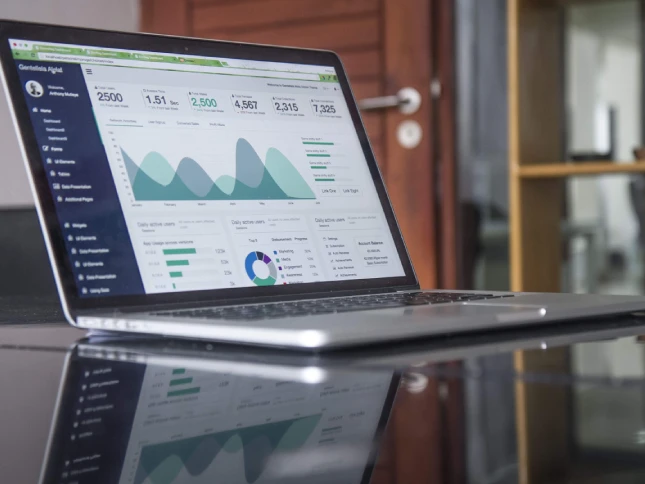In today’s digital age, data is king. Businesses that can collect, store, and analyze data have a significant advantage over their competitors. Data and analytics can be used to drive digital transformation by helping businesses to:
- Understand their customers better: Data can be used to track customer behavior, preferences, and demographics. This information can be used to create more personalized products and services, target marketing campaigns more effectively, and improve customer satisfaction.
- Identify new opportunities: Data can be used to identify trends and patterns in the market. This information can be used to develop new products and services, enter new markets, and expand into new channels.
- Optimize operations: Data can be used to identify areas where businesses can improve efficiency and productivity. This information can be used to streamline processes, reduce costs, and improve margins.
- Make better decisions: Data can be used to support decision-making by providing insights into the past, present, and future. This information can be used to make more informed decisions about everything from product development to marketing campaigns.
Data and analytics across industries
Data and analytics can be used to drive digital transformation across all aspects of a business. Here are a few examples:
- Retail: Retailers can use data to track customer behavior in stores and online. This information can be used to improve the customer experience by personalizing recommendations, providing targeted promotions, and optimizing inventory levels.
- Manufacturing: Manufacturers can use data to track production processes and identify areas for improvement. This information can be used to reduce costs, improve quality, and increase efficiency.
- Healthcare: Healthcare providers can use data to track patient records, identify trends in diseases, and develop new treatments. This information can be used to improve patient outcomes and reduce costs.
- Finance: Financial institutions can use data to track customer behavior, identify fraud, and manage risk. This information can be used to provide better customer service, protect customers from fraud, and make more informed investment decisions.
Data and analytics best practices
Data and analytics are powerful tools that can be used to drive digital transformation. However, it is important to use data and analytics effectively in order to achieve the desired results. Here are a few best practices for using data and analytics to drive digital transformation:
- Start with a clear goal: What do you want to achieve with data and analytics? Once you have a clear goal, you can start to collect the right data and develop the right analytics tools.
- Clean your data: Dirty data can lead to inaccurate results. Make sure to clean your data before you start analyzing it.
- Use the right tools: There are a variety of data analytics tools available. Choose the tools that are right for your needs and budget.
- Involve stakeholders: Data and analytics should not be a siloed activity. Make sure to involve stakeholders from across the organization in the data and analytics process.
- Communicate the results: Once you have analyzed the data, communicate the results to stakeholders in a clear and concise way.
By following these best practices, you can use data and analytics to drive digital transformation and achieve your business goals.
Examples from successful companies
Here are some case studies of how businesses have used data and analytics to drive digital transformation:
- Netflix: Netflix uses data to track customer viewing habits, preferences, and demographics. This information is used to create personalized recommendations for movies and TV shows. Netflix also uses data to optimize its marketing campaigns and improve its customer service.
- Amazon: Amazon uses data to track customer behavior on its website. This information is used to personalize product recommendations, optimize its pricing, and improve its shipping logistics. Amazon also uses data to develop new products and services.
- Walmart: Walmart uses data to track inventory levels, customer behavior, and supplier performance. This information is used to improve its supply chain efficiency, reduce costs, and increase sales. Walmart also uses data to develop new products and services.
- UnitedHealthcare: UnitedHealthcare uses data to track patient health records, identify trends in diseases, and develop new treatments. This information is used to improve patient outcomes and reduce costs. UnitedHealthcare also uses data to personalize its marketing campaigns and improve its customer service.
- The Weather Channel: The Weather Channel uses data to track weather patterns, predict storms, and provide personalized weather forecasts. This information is used to help people plan their activities, stay safe, and make informed decisions. The Weather Channel also uses data to develop new products and services, such as its weather app.
These are just a few examples of how businesses have used data and analytics to drive digital transformation. By using data and analytics effectively, businesses can improve their customer experience, optimize their operations, and make better decisions.

